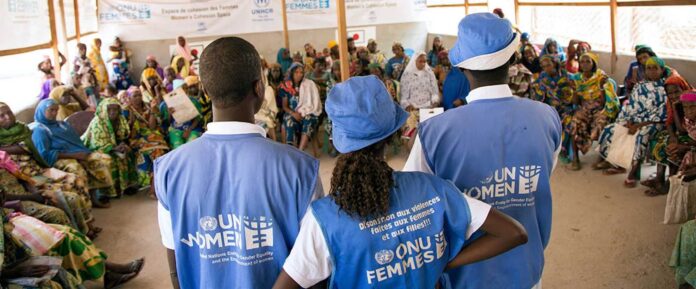UN Women research warns that half of the women-led and women’s rights organizations operating in crisis zones could close within six months due to a sharp decline in global humanitarian aid, putting millions of vulnerable women and families at risk.
According to UN Women’s recent global report, reduced humanitarian funding is pushing women-led and women’s rights organizations to the brink, with 50% of such groups in crisis-hit countries facing potential shutdown within half a year. These organizations provide life-saving support to communities impacted by conflict and disaster, and their closure would have catastrophic consequences for women and families depending on them.
A survey conducted by UN Women among 411 organizations across 44 crisis-affected nations found that 90% have already been impacted by shrinking donor support. Over 60% have had to scale back their work, cutting essential services like emergency medical aid, protection from gender-based violence (GBV), shelter, and economic relief.
A System Under Strain
The global humanitarian landscape is grappling with immense pressure. In 2024, the UN estimated $44.79 billion would be needed to address the world’s humanitarian needs, yet only 7% of that target has been met so far. As major donor governments reduce foreign assistance budgets, frontline women-led groups are among the worst affected—despite their critical role in reaching underserved populations.
Did you know?
Between 2021 and 2022, women’s rights organizations received less than 1% of total humanitarian aid—only $142 million globally.
From conflict zones in Myanmar, Sudan, and Palestine to Afghanistan, these organizations play an irreplaceable role in delivering targeted humanitarian support. Yet their survival now hangs in the balance.
Why Women and Girls Bear the Brunt
When women-focused groups are forced to reduce or shut down services, it’s women and girls who suffer the most. Currently:
- 62% of organizations surveyed have already curtailed operations.
- Over 500 women and girls die daily in humanitarian settings from preventable causes related to pregnancy and childbirth.
- 67% of organizations have cut services addressing GBV, followed by healthcare and livelihood programs.
In many conflict-affected regions, these organizations provide some of the only safe spaces and services for GBV survivors. Without them, access to protection, legal aid, trauma support, and economic security is lost.
Regional Examples:
- In Afghanistan, half of women’s organizations say funding cuts are directly impacting their programming for women.
- In Ukraine, 72% of such organizations report severe disruptions, with over 60% scaling back services for GBV survivors. One-third warn they may be forced to close within six months unless funding resumes.
Despite the urgent need, only 1.3% of humanitarian funding in 2024 was allocated to programs addressing gender-based violence. Yet research shows that gender-sensitive humanitarian efforts yield an $8 return for every dollar spent.
Why Women’s Organizations Are Crucial
These groups go beyond delivering services—they serve as advocates, community leaders, and changemakers. They:
- Reach marginalized populations with culturally relevant support.
- Provide psychosocial aid, legal support, and safe shelters for GBV survivors.
- Ensure women’s perspectives shape humanitarian response and policy.
- Help build long-term resilience by supporting women’s economic and social empowerment.
When these groups lose funding, the entire humanitarian response becomes less equitable, less effective, and less accountable.
In Cox’s Bazar, Bangladesh, a joint initiative by UN Women and Oxfam—“Means to Lead”—has empowered Rohingya refugee and host community women by enhancing leadership skills, reducing GBV, and supporting livelihoods. Similar projects worldwide are under threat due to shrinking aid.
How You Can Support
1. Donate to frontline women-led organizations:
UN Women collaborates with thousands of women-led groups that offer services like cash aid, legal and psychosocial counseling, and GBV protection. In 2023 alone, UN Women supported 1,580 such organizations globally.
2. Share facts and raise awareness:
Use your platforms to amplify the voices and work of women’s organizations in crisis zones. Public awareness can drive donor attention and policy change.
3. Advocate for better funding and representation:
Urge donor governments and institutions to commit to:
- Direct, long-term, and flexible funding for grassroots women’s organizations.
- Inclusion of women leaders in humanitarian decision-making.
- Partnerships that value local knowledge and leadership.
Supporting these organizations means ensuring a faster, fairer, and more inclusive humanitarian response—one that protects the rights, dignity, and safety of women and girls in the most vulnerable contexts.
Source: UN Women




